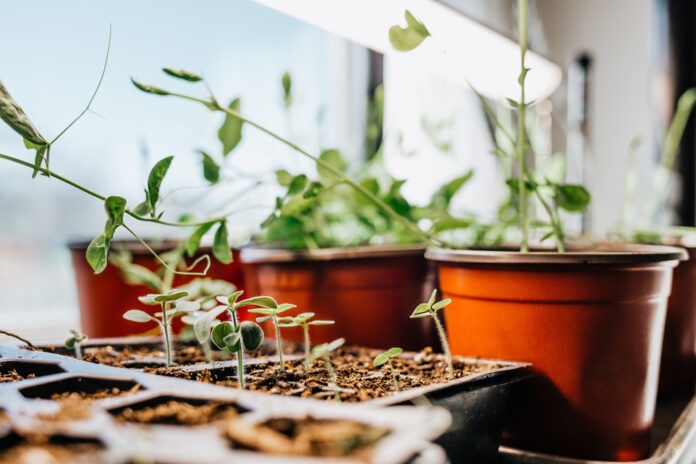Embarking on the journey of home gardening is both exciting and rewarding. Whether you’re dreaming of fresh vegetables, fragrant herbs, or colorful flowers, starting a garden from scratch allows you to cultivate your own green oasis. Here’s a comprehensive guide to help you grow a thriving garden right in your backyard.
Assess Your Garden Space
Before planting, it’s crucial to understand your garden space. Choose a location that receives at least 6-8 hours of sunlight daily, as most plants, especially vegetables and flowering plants, need ample sun to flourish. Understanding your yard’s sunlight exposure is the first step toward a successful garden.
Consider the accessibility of water. Having easy access to water sources like a hose or irrigation system makes watering more convenient and efficient. Placing your garden close to your home not only makes maintenance easier but also allows for quick responses to any gardening issues that may arise. Proximity aids in regular upkeep and increases the chances of a thriving garden.
Test and Prepare Your Soil
Healthy soil is the foundation of a productive garden. Begin by testing your soil to determine its pH and nutrient levels. This step helps in identifying what amendments are needed to create the optimal growing environment. Soil testing provides insights into your soil’s health, ensuring your plants have the nutrients they need.
Enhance your soil by adding organic matter such as compost or aged manure. This enriches the soil structure, improves drainage, and boosts fertility. Regularly incorporating organic matter can lead to healthier plants and higher yields. Organic amendments improve soil vitality, setting the stage for a successful garden.
Choose the Right Garden Type
Decide whether you want in-ground beds, raised beds, or container gardens. Raised beds are excellent for beginners as they offer better control over soil quality and drainage. They are especially beneficial if your native soil is poor or compacted. Raised beds provide an accessible and manageable option for new gardeners.
Alternatively, container gardening is ideal for small spaces or urban settings. Using pots, planters, or vertical structures, you can maximize limited space and still enjoy a variety of plants. Vertical gardening optimizes small areas, allowing you to grow more in less space.
Plan Your Garden Layout
Mapping out your garden helps in efficiently utilizing space and ensuring plant compatibility. Consider the mature size of plants to prevent overcrowding and allow for proper air circulation. Companion planting can enhance growth and deter pests by pairing plants that benefit each other. Strategic planning leads to a harmonious garden, promoting plant health and productivity.
Select Suitable Plants
As a beginner, start with easy-to-grow plants that are well-suited to your climate and soil conditions. Vegetables like lettuce, tomatoes, and peppers, or herbs such as basil and parsley, are great options. Choose high-quality seeds or healthy seedlings from reputable sources to increase your chances of success. Selecting the right plants sets the foundation for a fruitful gardening experience.
Consider the seasonality of plants, opting for cool-season crops in spring and fall, and warm-season crops in late spring and summer. Planting according to the appropriate season ensures that your plants have the optimal conditions for growth. Seasonal planting aligns with temperature variations, maximizing growth potential.
Prepare for Planting
After choosing your plants, it’s time to prepare them for planting. For seedlings, gently loosen the roots before placing them in the ground to encourage root spread. Plant at the recommended depth and spacing, as overcrowding can lead to competition for nutrients and increased risk of diseases. Proper planting techniques promote healthy development.
Set Up Irrigation
Consistent watering is key to plant health. Installing a drip irrigation system with a timer ensures that your plants receive the right amount of water without overwatering. This method conserves water and directs moisture to the root zone, reducing evaporation and disease risk. Efficient irrigation simplifies watering and keeps your plants hydrated.
Mulch and Weed Management
Applying a layer of organic mulch such as straw or wood chips helps retain soil moisture, suppress weeds, and regulate soil temperature. Mulching also adds organic matter to the soil as it decomposes. Regular weeding prevents competition for nutrients and keeps your garden tidy. Mulching and weeding are essential maintenance tasks that support plant health.
Pest and Disease Control
Monitor your garden regularly for signs of pests or diseases. Employ integrated pest management strategies, such as encouraging beneficial insects, using physical barriers, or selecting disease-resistant plant varieties. Early detection and natural methods can keep pest populations under control without heavy reliance on chemicals.
Provide Support Structures
Some plants, like tomatoes and cucumbers, require support structures such as stakes, cages, or trellises. These supports keep plants upright, improve air circulation, and make harvesting easier. Supporting your plants encourages healthy growth and maximizes space.
Fertilize and Feed Your Plants
Feeding your plants with the right nutrients promotes vigorous growth and bountiful harvests. Use organic fertilizers or compost teas to provide essential nutrients. Follow the recommended feeding schedule for each plant type. Regular fertilization boosts productivity and ensures your plants thrive.
Harvest and Enjoy
Harvest your produce at the peak of maturity for the best flavor and nutritional value. Regular harvesting can encourage plants to produce more. Share your bounty with friends and family or enjoy the satisfaction of eating food you’ve grown yourself. Harvesting is the rewarding culmination of your gardening efforts.
Reflect and Plan Ahead
At the end of the growing season, reflect on your successes and challenges. Note which plants performed well and which practices were most effective. This information will be invaluable for planning next year’s garden. Continuous learning leads to gardening success, allowing you to improve and expand your garden over time.
Starting a home garden from scratch may seem daunting, but with careful planning and consistent care, you can create a flourishing garden that brings joy and sustenance. Embrace the learning process, and don’t be afraid to start small. Happy gardening!


